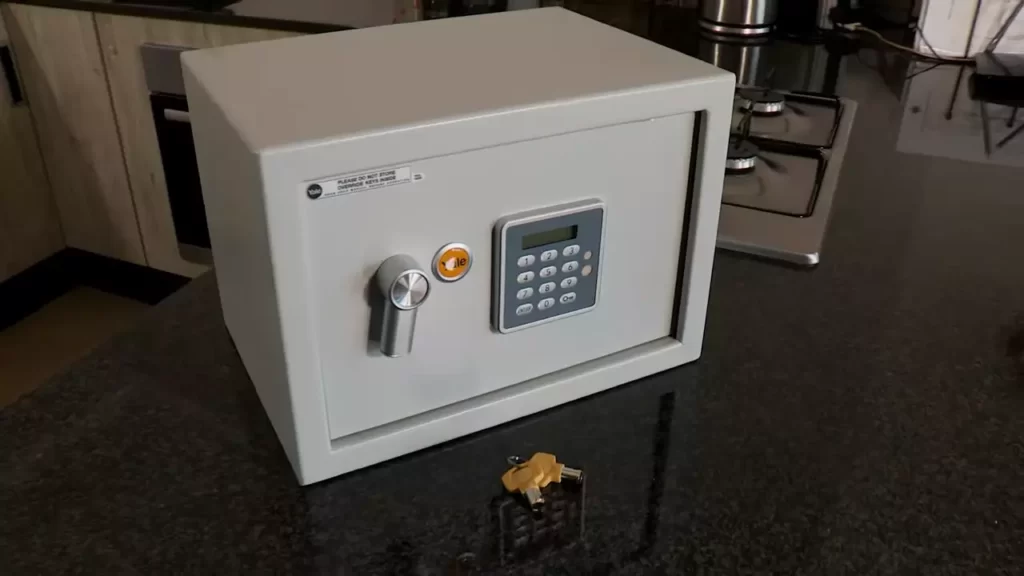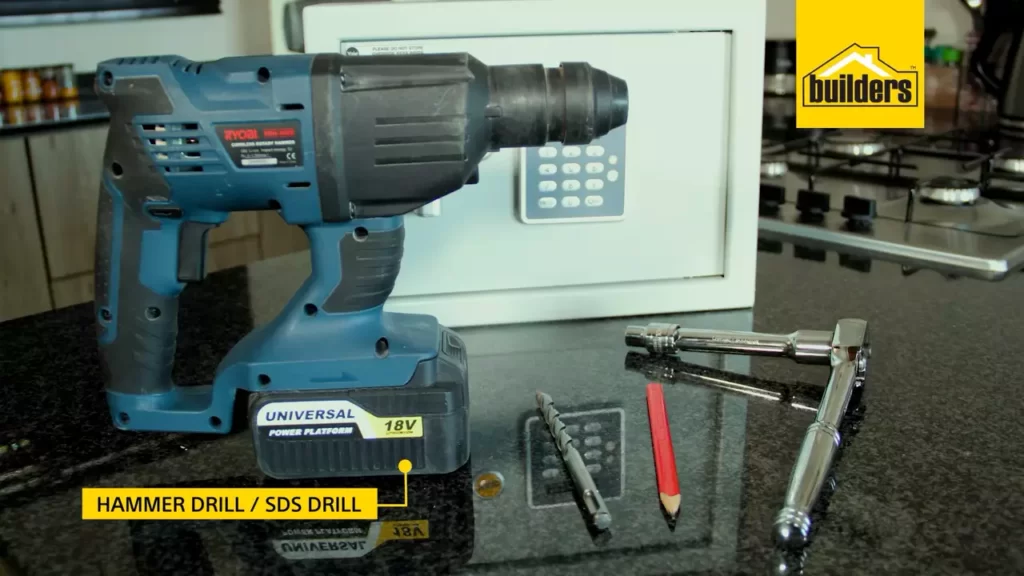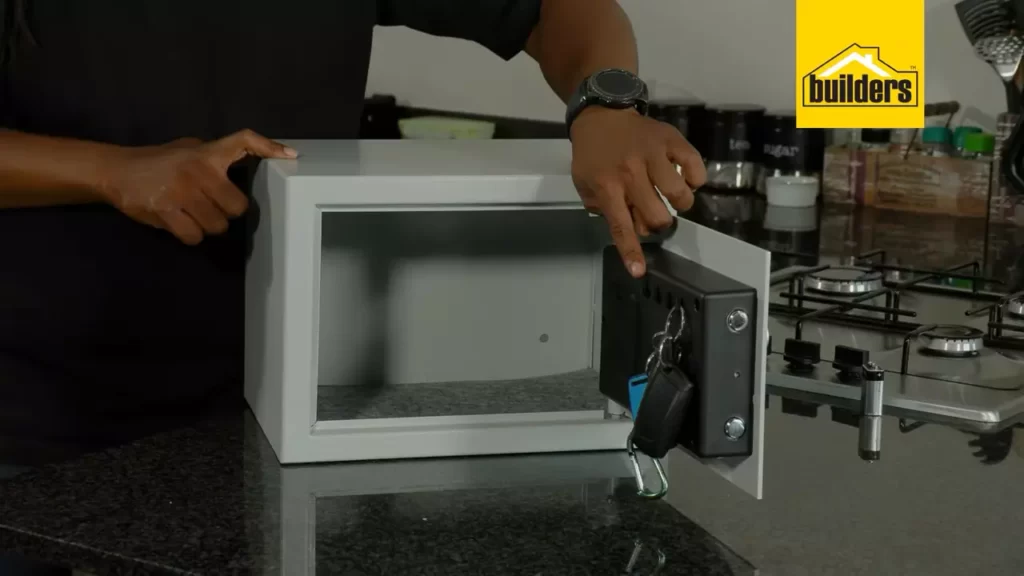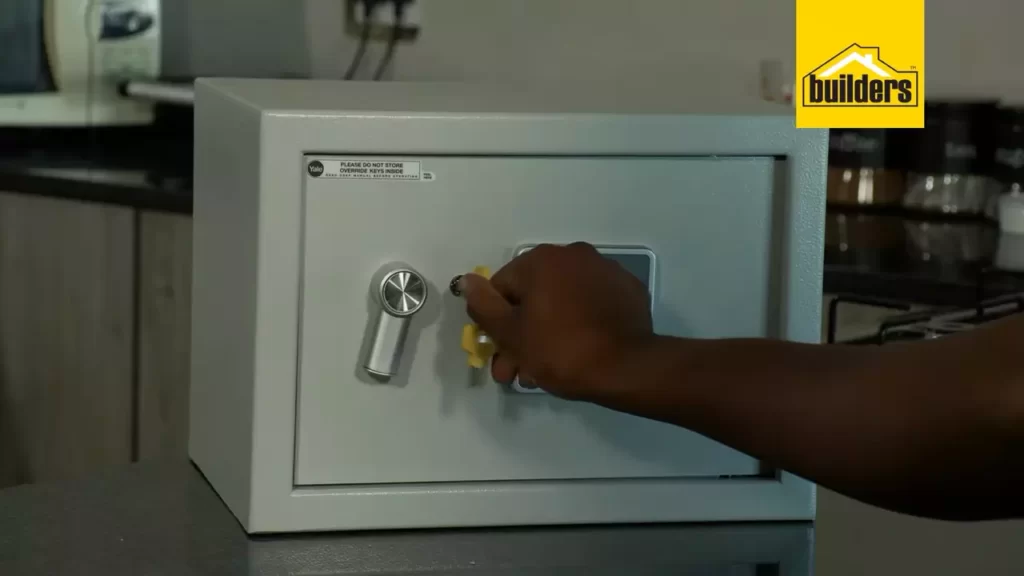To install a safe at home, first, choose a suitable location and mark it on the wall. Then, drill holes into the wall and secure the safe using anchor bolts.
Finally, check the alignment and ensure the door swings open smoothly. Introducing a safe at home can offer peace of mind and protect your valuable possessions from theft or damage. Whether it’s cash, jewelry, important documents, or sentimental items, a safe provides a secure storage solution.
Installing a safe requires careful planning and execution to ensure its effectiveness. This article provides a step-by-step guide on how to install a safe at home, ensuring it is properly secured and easily accessible when needed. By following these instructions, you can take the necessary steps to safeguard your belongings and enhance the security of your home.
Choosing The Right Safe For Your Home
When it comes to protecting your valuables, having a safe at home is a wise investment. Not only does it provide peace of mind, but it also helps safeguard your belongings from theft, fire, and water damage. However, with so many options available in the market, finding the perfect safe for your home can be a daunting task. In this guide, we will walk you through the essential factors to consider when selecting a home safe.

Factors to consider when selecting a home-safe
1. Size and capacity
The first step in choosing the right safe for your home is determining the ideal size and capacity. Consider the items you plan to store in the safe and estimate how much space you’ll need. It’s crucial to ensure that the safe is large enough to accommodate your valuables without being too bulky or conspicuous. Additionally, consider the future as well – if you anticipate acquiring more valuable items over time, it’s wise to go for a larger safe with extra storage capacity.
2. Type of safe
Next, you’ll need to decide on the type of safe that suits your needs. There are three main options to choose from:
- Wall-mounted: These safes are installed directly into a wall to create a hidden storage solution. They are ideal for those looking to save space or maintain a discreet appearance.
- Floor: Floor safes are installed beneath the floor and offer excellent protection against burglary. They can be covered by furniture or carpet, making them difficult to detect.
- Portable: As the name suggests, portable safes can be easily moved from one location to another. They are perfect for those who require flexibility or plan to relocate in the future.
3. Locking mechanisms
Locking mechanisms are a crucial consideration when choosing a home safe. There are three popular options available:
- Key: Key-operated safes are simple to use and offer quick access to your belongings. However, it’s important to keep the key in a secure location and ensure it doesn’t fall into the wrong hands.
- Combination: Combination safes require the user to enter a specific code to unlock the safe. This eliminates the concern of losing a key but requires memorization or note-taking of the combination.
- Digital: Digital safes utilize a keypad or a biometric fingerprint scanner to grant access. They offer convenience and enhanced security, as the combination or fingerprint is unique to the user.
4. Fire and water resistance features
In addition to protecting against theft, it’s important to ensure that your home safe can withstand fires and water damage. Look for safes with fire-resistant ratings and certifications to ensure they meet industry standards. Some safes also feature waterproof seals, providing an extra layer of protection from floods or accidental water spills.
By considering these essential factors – size and capacity, type of safe, locking mechanisms, and fire and water resistance features – you’ll be well-equipped to choose a safe that provides optimal protection for your valuable belongings.
Measuring And Preparing The Installation Area
Installing a safe at home requires careful measurement and preparation to ensure a secure and suitable fit. Before starting the installation process, it is important to determine the ideal location for your safe, assess its accessibility and convenience, hide it from potential burglars, and consider any fire and water hazards. Measuring the area accurately, considering installation restrictions, and allowing enough clearance for opening and closing the safe are also crucial steps. In this article, we will guide you through each of these steps to help you install your safe with ease and confidence in the Ideal Location for Your Safe
When choosing the location for your safe, consider factors such as visibility, accessibility, and potential vulnerabilities. Opt for a place that is discreet and does not attract unwanted attention from prying eyes. Additionally, select a spot that is easily accessible for you, but not necessarily for potential burglars. Ideally, you want your safe to be installed in a secure area, away from entry points such as doors and windows.

Assessing Accessibility and Convenience
Consider how frequently you will need to access your safe and ensure that it is conveniently located. Installing the safe in a room or area that you frequently use, such as a bedroom or office, is often a practical choice. Assessing accessibility will also help you determine the size and weight of the safe that you can comfortably maneuver in your home.
Hiding the Safe from Potential Burglars
While the location of your safe should be accessible to you, it is equally important to keep it hidden from potential burglars. Choose a location that is not easily visible and can be concealed, such as inside a closet or behind furniture. This will minimize the chances of a thief discovering and targeting your safe.
Considering Fire and Water Hazards
Protecting your valuables not only from theft but also from fire and water damage is essential. Consider installing your safe away from potential fire hazards, such as heating vents or flammable materials. Additionally, select a location that is less likely to be affected by water damage in the event of a flood or leak.
Measuring the Area for Proper Safe Fit
Prior to purchasing a safe, measure the intended installation area to ensure it can accommodate the dimensions of the safe you are considering. Use a tape measure to accurately measure the height, width, and depth of the space. Record these measurements to help you choose a safe that fits perfectly and avoids any last-minute surprises.
Allowing Enough Clearance for Opening and Closing the Safe
When measuring the area, it is essential to account for the clearance required to open and close the safe smoothly. Leave ample space in front of the safe, as well as to the sides, to avoid any obstructions that could hinder its operation. Taking this step will ensure that you have a hassle-free experience when accessing your valuables.
Checking for Installation Restrictions
Before finalizing the location for your safe, consider any potential installation restrictions specific to your home. Take note of any electrical wiring, plumbing, or other installations that could pose a challenge. Adjust your choice of location accordingly to ensure a smooth installation process without any conflicts.
By following these steps and taking the necessary precautions, you can confidently measure and prepare the installation area for your safe at home. The right location, accurate measurements, and proper clearance are key elements to ensure a secure and accessible safe installation.

Mounting And Securing The Safe
When it comes to installing a safe at home, one of the most crucial steps is mounting and securing it properly. This ensures that your safe stays in place and provides the maximum level of protection for your valuables. In this section, we will guide you through the process of mounting and securing a safe, step by step.
Preparing the necessary tools and materials
Before you begin the installation process, make sure you have all the necessary tools and materials ready. This will help you complete the installation smoothly and efficiently. Here are the common tools required for safe installation:
- Power drill
- Stud finder
- Measuring tape
- Level
- Pencil
- Screwdriver
- Adjustable wrench
In addition to these tools, you will also need some additional materials for secure mounting:
- Mounting bolts
- Washers
- Nuts
- Concrete anchors (if installed on a concrete wall)
Marking and drilling holes for safe installation
Using a stud finder, locate the wall studs where you plan to mount the safe. Mark the positions clearly with a pencil. Ensure that the marks are accurate and align with the desired location for the safe.
Next, use a power drill to drill pilot holes at the marked positions. These pilot holes will guide the placement of the mounting bolts. Make sure the drill bit is the appropriate size for the mounting bolts.
Installing the safe onto the desired surface
With the pilot holes in place, it’s time to install the safe onto the desired surface. Carefully lift and position the safe, ensuring that it is level and aligned with the marked holes.
Insert the mounting bolts through the holes in the safe and into the pilot holes. Secure the bolts using washers and nuts, tightening them securely with an adjustable wrench. This will provide a strong and stable connection between the safe and the wall.
Testing the stability and security of the installed safe
Once the safe is installed, it’s important to test its stability and security. Attempt to move and shake the safe gently to ensure it is firmly in place. Check for any visible weaknesses or gaps in the installation, making adjustments if necessary.
Verify the functionality of the locking mechanisms by opening and closing the safe multiple times. Ensure that the safe locks securely and that there are no issues with the locking mechanism.
Finally, take a moment to double-check the installation, examining each aspect carefully. Look for any potential vulnerabilities or gaps in the mounting and address them immediately to ensure the maximum level of security for your safe.
Maintaining And Monitoring Your Home Safe
Maintaining and monitoring your home safe is crucial to ensure its reliable performance and the security of your valuable possessions. Regular checks, inspections, and necessary updates will help you identify any potential issues or vulnerabilities and take the appropriate measures to address them. Here are some essential steps to help you maintain and monitor your home safe:

Regular checks for safe operation and security
Regularly inspecting your home safe is essential to ensure it is operating smoothly and is free from any security risks. Perform routine checks to ensure that the locking mechanisms are functioning properly and that the safe door closes tightly. Regularly test your safe to confirm that it locks and unlocks without any issues.
Inspecting the locking mechanisms
Regularly inspect the locking mechanisms of your home safe to identify any signs of wear and tear or potential vulnerabilities. Check the safe’s bolts, hinges, and other components to ensure they are in good condition and functioning correctly.
Lubricating hinges and moving parts if necessary
If you notice any stiffness or resistance when opening or closing your safe door, consider lubricating the hinges and other moving parts. Use a suitable lubricant to maintain the smooth operation of the hinges and increase the overall lifespan of your safe.
Checking for signs of forced entry or tampering
Regularly inspect your home safe for any signs of forced entry or tampering. Look for scratches, dents, or other physical damages that may indicate an attempted break-in. If you notice anything unusual, such as a loose or damaged locking mechanism, take immediate action to address the issue.
Updating security measures periodically
To stay one step ahead of potential threats, it is vital to update your security measures periodically. Stay informed about the latest techniques used by burglars and make necessary adjustments to enhance the security of your home safe. This may include upgrading your safe’s lock or digital security features to more advanced models.
Changing safe combinations or access codes
Regularly changing your safe’s combination or access codes adds an extra layer of security to your home safe. Choose strong and unique combinations or codes and remember to update them periodically. Avoid using easily guessable information, such as birth dates or phone numbers, and keep your codes secret.
Upgrading locks or digital security features
If your safe’s locks or digital security features are outdated or no longer reliable, consider upgrading them to ensure maximum protection for your valuables. Consult with a professional locksmith or safe technician to determine the best security enhancements for your specific needs.
Auditing safety measures in response to changing circumstances
Regularly assess the effectiveness of your home safe’s security measures and make adjustments in response to changing circumstances. Factors such as a new home, changes in household members, or other lifestyle changes may necessitate a review of your current safety practices and adjustments to your safe’s security features.
Keeping proper documentation and inventory
Maintain a record of all important documents and valuable items that are stored in your home safe. Create an inventory list that includes detailed descriptions, serial numbers, and photographs if applicable. Keep this documentation in a secure location outside of your safe, such as a safety deposit box or a digital encrypted file.
Organizing important documents and valuables
Proper organization is crucial to maintain the efficiency and accessibility of your home safe. Categorize and label your documents and valuables with appropriate tags or folders. This will help you quickly locate what you need and minimize the time spent rummaging through your safe.
Creating backup copies of essential digital files
For important digital files stored in your home safe, consider creating backup copies. This will help you safeguard your data from accidental loss or damage. Maintain these backups in secure locations, such as encrypted external hard drives or cloud storage.
Maintaining an inventory of items stored in the safe
Keep an updated inventory list of all the items stored in your safe. Include the item’s description, estimated value, and any pertinent information. Regularly review this inventory list to ensure accuracy and update it whenever there are changes.
Frequently Asked Questions On How To Install A Safe At Home
How Can I Hide My Safe In My House?
To hide your safe in your house, consider these effective methods:
1. Opt for discreet locations, such as behind false walls or under floorboards.
2. Blend the safe with camouflage, like a hidden panel or a disguised object.
3. Install a secret compartment within furniture or cabinets.
4. Create diversion safes by using everyday objects.
5. Use creative concealment ideas to keep your safe inconspicuous.
How Do You Install A Safe In Your House?
To install a safe in your house, follow these steps:
1. Choose a suitable location for the safe.
2. Measure the dimensions and mark the mounting holes.
3. Drill holes and insert anchors.
4. Position the safe and secure it to the wall or floor.
5. Test the safe to ensure it is properly installed and functional.
Where Is The Best Place To Put A Safe In Your House?
The best place to put a safe in your house is in a hidden and hard-to-reach location, such as a closet or basement. This ensures that it is not easily seen or accessible by intruders.
Is It Easy To Install A Safe?
Yes, installing a safe is easy. Just follow the instructions provided and use the necessary tools. Make sure to choose a suitable location and secure it properly. It’s a straightforward process that doesn’t require any special skills or expertise.
Conclusion
Installing a safe at home is a crucial step in safeguarding your valuables and protecting your peace of mind. By following the steps outlined in this guide, you can ensure a secure and effective installation process. Remember to choose a suitable location, follow the manufacturer’s instructions, and consider professional assistance if needed.
Your home’s security should never be compromised, and installing a safe is a proactive measure towards achieving that. Take action today and give yourself the ultimate security solution you deserve.
